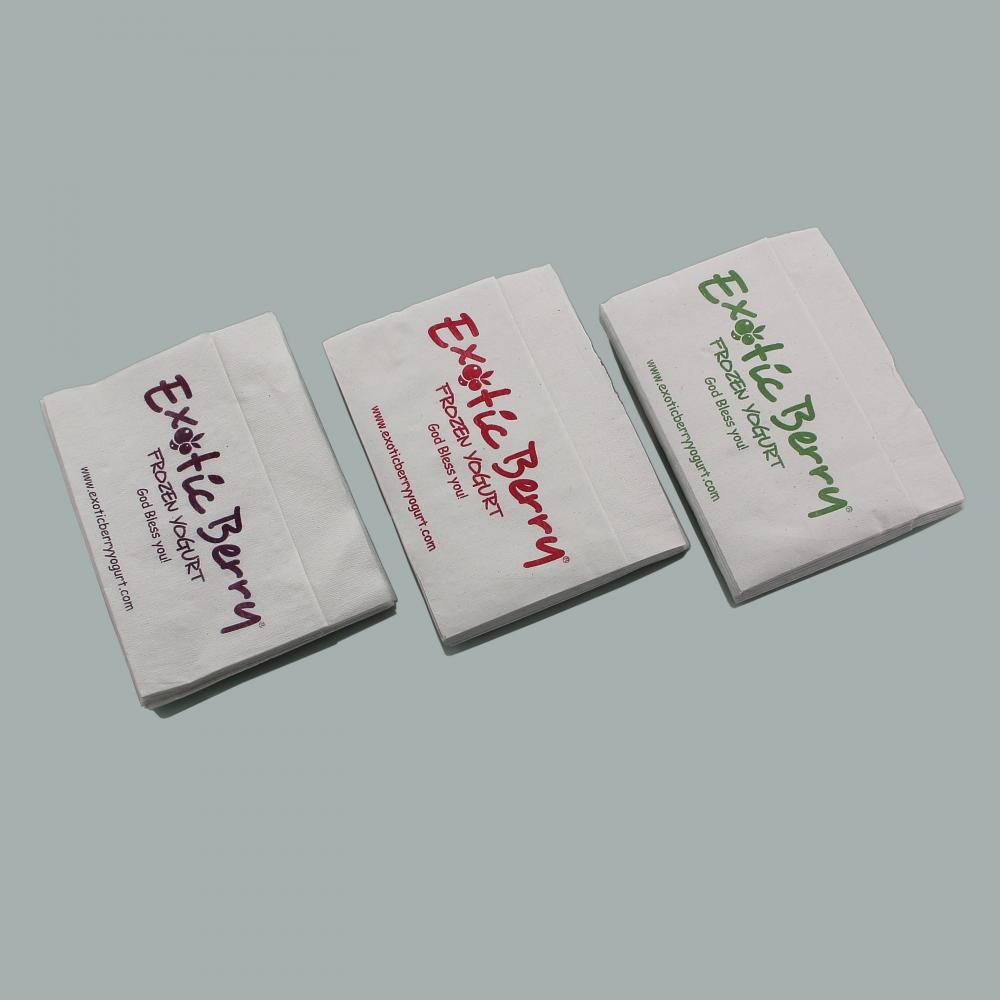Foreword
The power plant control system has special requirements for operational reliability. The power plant system has the characteristics of dense I / O measurement points, dense field devices, three-dimensional equipment layout, complex control functions and control strategies. The power plant control system also has a complex automatic monitoring system; the coordinated control of the machine and furnace involves a lot of equipment, large amount of information, and complicated control; steam turbine control, SOE requires millisecond response speed and other issues. Based on the above reasons, the field bus technology can only be applied to engineering and reflect the field bus only after fully understanding the field bus mechanism, the differences with DCS and PLC, and the difficulties that may exist in the application, and fully considering the principle of coordinated safety and economy. Superiority.
Fieldbus does not play an advantage in all control situations. For large-scale systems with dense measuring points, dense field installations, three-dimensional equipment layout, and mixed digital and analog quantities in thermal power plants, the field bus control is used to achieve decentralized control. Since multiple devices are required to achieve this, it is cumbersome and reduces its reliability. On the contrary, DCS seems to have advantages here. But the fieldbus signal system technology of bidirectional digital communication of fieldbus is beyond DCS. Therefore, the coexistence of DCS and fieldbus should be adopted to give play to their respective advantages.
1. Suggestions on the application scope of fieldbus:
(l) Because there are few examples of large-scale fieldbus applications in domestic DCS systems and the limited types of fieldbuses supported, PLC-based programmable controllers can be used to monitor and control the plant's auxiliary public system. PLC programmable programs that follow the fieldbus communication protocol The controller implements monitoring of multiple auxiliary public systems, and establishes a network of auxiliary public systems throughout the plant through fieldbus communication technology to improve the level of monitoring and management.
(2) Geographically dispersed single impulse adjustment items.
(3) Separate geographically dispersed independent electric valves or motors.
Second, the application of fieldbus system recommendations
(l) The protection of the host and main auxiliary machines that affect the safe operation of the unit adopts mature conventional control methods and is not included in the field bus. The main auxiliary factory protection and important interlocking signals are kept hard-wired. Such as:
Boiler Safety Monitoring System (FSSS);
Steam turbine digital electro-hydraulic control system (DEH);
Steam Turbine Emergency Trip System (ETS);
Bypass control system (BPS);
Incident Sequence Record (SOE). SOE requires a resolution of lms. In the current design, most of the SOEs are connected to the trip contact signals and electrical switches of the main and auxiliary machines. The reason for the first trip of the main and auxiliary machines is determined by the logic of the controller. In order to ensure the resolution of SOE, it is recommended to still use a conventional DI card or a dedicated SOE card.
(2) Switch-type pneumatic valves and solenoid valves for interlock protection are not included in the fieldbus. Since the two-position pneumatic valves controlled by solenoid valves in the main plant are more dispersed, it is not appropriate to use a valve terminal with a bus interface for control. It is recommended to use a conventional method to connect to the DCS.
(3) Domestic electric actuators are not included in the fieldbus. Due to the current imperfect interface of domestic fieldbus electric actuators, lack of engineering application practice, and no mature application performance, the difference between imported fieldbus electric actuators and domestic electric actuators is relatively large. In order to fundamentally reduce the project cost, domestic electric actuators are connected to DCS in a conventional way.
(4) Switching instruments such as pressure switches, level switches, and temperature switches are not included in the fieldbus.
(5) Adjustable pneumatic actuators, which are used for non-essential adjustment loops, can be considered to be included in the field bus, and use an intelligent positioner with a field bus interface. For important circuits, conventional hard-wired + Hart instruments can be used, such as water supply, steam temperature, air supply, air induction, and coal mill.
(6) Adjustable electric actuators, which are used in non-important control loops, can be considered to be included in the fieldbus, and are used in important loops (water supply, steam temperature, air supply, and air induction), using hard wiring.
(7) Switch-type valve electric device, used in non-essential systems, can be considered to be included in the field bus; for important systems, the control function, protection and interlocking function are completed by hard wiring.
(8) The transmitters are connected to the DCS using fieldbus smart transmitters, so as to use the fieldbus device diagnosis and management software in the unit DCS to realize device management and fault diagnosis. Smart transmitter with Hart communication function can be used.
(9) 400V and below motors use field bus. All signals are connected to the control system through the field bus. 6KV motors can also be included in the field bus. The start and stop command signals and the motor start and stop signals are hard-wired. Other signals are used. Bus mode. For the safety of the unit, the on / off command signals and status feedback signals of all unit motors and important power switches in the main building are still hard-wired into the DCS, and other signals are connected to the unit DCS through the communication interface. Although the unit's factory motor and factory power monitoring system use field buses (CAN, LONWORKS, Modbu, etc.), most of them do not use field buses such as FF and Profibus. When conditions permit, it can also be used for factory electric and consider using a smart motor controller with Profibus-DP interface (similar to Siemens' SIMOCODE product). It should be noted that the loss of Siemens SIMOCODE is mainly caused by poor on-site environment and poor maintenance. In addition, the anti-interference isolation measures of SIMOCODE and system communication are taken, Profibus active anti-interference modules are installed, and appropriate interface devices (such as Y-switches, photoelectric converters, etc.) are added to prevent communication interruption.
(10) Remote I / O can be used for the temperature measurement point of the host / auxiliary machine. After adopting the fieldbus technology, for the relatively concentrated temperature measurement points on the site, consider using a fieldbus type intelligent transmission unit or follow the current conventional remote training method to access the DCS. Because the current intelligent temperature transmitter with bus interface is still relatively expensive, if all temperature measurement points adopt the bus method, it will increase a large project investment. And for the temperature signal, it is not obvious to use the bus to access the increased information content. Therefore, consider using conventional methods to access the control system for temperature measurement points.
(11) The measurement signal used only for monitoring can use fieldbus.
(12) A field bus can be used for the factory power supply system.
(13) The closed-loop control function and the sequential control logic of the function group are completed in the controller.
(14) After the frequency converter adopts special anti-interference isolation measures, the field bus can also be considered.
(15) The system of boiler make-up water, condensate polishing, waste water treatment and other systems can be given priority to adopt field bus technology.
3. Problems to be noticed when applying fieldbus
(1) Field bus noise
Fieldbus applications involve system noise issues. Since all field devices are fully connected to the fieldbus network, TAP connectors are used at the connection points. The connectors are exposed to harsh environments on the site for a long period of time, and network noise will occur, which in turn will cause false alarms between the device and the network connection. Therefore, the field bus has strict requirements on the site's hygienic conditions and the site's vibration conditions. The joint must be checked every time it stops, but the noise cannot be completely eliminated after the inspection.
(2) Redundancy
Fieldbus design idea, the low-speed part does not need to be redundant, because the fieldbus disperses the danger, the field instrument can be self-regulated in the field and adjusted independently. Since there is no redundancy, although the adjustment can be completed on the spot in the event of a bus failure, the operating personnel cannot monitor the system operation status. According to the thermal control maintenance standards, the main operating parameters of the control unit cannot be monitored and the unit operation should be stopped. Therefore, redundant design is necessary.
(3) Failure impact
The design of the fieldbus network is crucial, depending on factors such as the size of the system I / O points, the geographic distribution of devices, and the relevance of functions. Design the coverage of each layer of the network, the number of branches, the length of branches and branches, the number of devices in each branch, etc. These designs have an important impact on system performance and hardware configuration. Therefore, in the engineering application, each process subsystem should be designed according to the process relevance and site layout location. When designing the network segmentation, the following principles should be followed: the number of field buses connected to each network segment is 6-10; the field instruments with redundant settings should be connected to different network segments; the equipment running in parallel or redundantly configured in the process Related drive devices should be connected to different network segments. The control system should reasonably configure the number of buses and attached field devices according to the process flow to ensure that when any one bus fails, only local failures of the system will occur, which will not cause the critical state of the unit, causing the entire system to be out of operation, and will affect this Limit to the minimum.
(4) Transmission time and security
The transmission speed of the bus is required to be as fast as possible, but the transmission speed cannot be solved by simply increasing the transmission rate. The bus system transmission must have a definite time, that is, the time interval for the controller to send out the control value and the time interval for receiving the actual value of the fieldbus device must be a fixed value, so as to ensure the completion of the control and adjustment tasks. When choosing the bus system, you must pay attention to the transmission efficiency. On the premise of high transmission efficiency, you can choose a relatively low transmission rate. Because of the low transmission rate data communication, it has high anti-interference ability and long transmission distance (such as 500K transmission rate, the maximum transmission distance is 400 meters; and 12M transmission rate, the maximum distance is 100 meters).
(5) Transmission medium and connection method
The complete field bus system, in addition to the scope of the network (that is, the maximum distance) is an important indicator, whether it is possible to use different transmission media between different bus segments in the bus system is also an important factor. It makes the composition of the system more flexible and more in line with the actual requirements of the working conditions. The serial transmission method has obvious advantages in design, installation, modulation and connection technology, but in terms of communication, such as transmission time, real-time time, cycle time, transmission certainty and diagnosis are inferior to the parallel transmission method.
(6) Higher maintenance costs
The increase of the adjustment function undertaken by the DCS system using fieldbus technology and field smart equipment will also increase its cost. During maintenance, replacing the meter will have a very expensive cost. Therefore, it is necessary to select equipment with good reputation and performance numbers to achieve the effect of reducing production costs and improving equipment performance.
(7) Functional design of on-site smart meters
One of the major tasks facing fieldbus adoption is the functional design of field smart meters. When using DCS, after the input and output signal system and the number of I / O points are determined, the choice of DCS has little to do with on-site instruments. When the field bus is adopted, many control functions of the DCS are transferred to the field smart instrument to complete, so the field bus selection and function design are closely linked with the field smart instrument. When designing, a unified protocol standard must be determined first. Fieldbus and field smart instruments must abide by this protocol standard; then a preliminary site should be determined according to the process distribution of the field smart instruments, explosion-proof level requirements, measurement parameter ranges, and completed functions. Bus structure, calculate the number of network segments, determine the number of on-site intelligent instruments and equipment in each segment and the communication rate of each segment; finally define the control function of each on-site intelligent instrument according to the process operation requirements, and pass the engineer station to the entire The control system carries on the function block configuration design. The above work has broken the design limits of the original control function, and the control room equipment and field smart instruments are considered as a whole. The reasonable field bus structure and control scheme may need to be determined after repeated calculations and comparisons.
There are still certain defects in the field bus, so most monitoring systems and peripheral devices are widely used, because the defects and outages of peripheral devices will not affect production, and the bus used for peripheral device control can make the control system design simple Brightly.
(8) The design of unit protection should be considered
The unit protection should be strictly designed to prevent the protection from malfunctioning and refusing to operate. The control system I / O card and equipment should be used for two or three. The field equipment should enter different I / O cards and different I / O cards. Belong to different control stations, to achieve protection from malfunction caused by failure of one device, one I / O card, and one control station.
The field bus should focus on this aspect, because the field bus field layout requires us to change this design, otherwise it will increase the cost, such as local equipment needs to complete the three take two functions on the spot, and the signal must be with the three local buses Reaching three control cabinets will increase the workload and cost, but only then can the design requirements be met.
4. Fieldbus type selection analysis
(l) Control system
At present, mainstream foreign DCS manufacturers basically support Profibus and FF bus protocols, as well as their own management software. However, more and more DCS currently uses domestic DCS for 300MW units. Domestic DCS manufacturers such as Heli, GE Xinhua, Zhejiang Central Control , Guodian Zhishen, Shangziyi, etc. also support the Profibus protocol, but from the survey situation, in fact, they do not have enough support for the fieldbus, and they do not have advantages in the level of construction and installation and information management after using the fieldbus, and domestic The manufacturer does not have large-scale application engineering capabilities and related management software. In recent years, large-scale and large-scale thermal power units using fieldbus have basically adopted foreign equipment. Therefore, if the domestic DCS system is used, the fieldbus technology is still mature in the unit unit and main plant area.
Foreign mainstream PLC manufacturers support bus protocols such as Profibus, and there are many large-scale engineering examples. Since last year, the price of foreign PLCs has fallen rapidly. For example, field bus equipment is used in auxiliary workshop control. From the perspective of price, project implementation and benefit, it can be Using fieldbus technology.
(2) Field equipment
Intelligent integrated electric actuators mainly include SIPOS5-Flash series, AUMA-MATIC series, ROTORK-IQ series (also supports FF bus standard, EMG-DREHMO series, LimitorqueMX series, Shanghai Automation Instrumentation 11 Factory AI, MI series, Wenzhou Rui Profibus is supported by RQM and RA series and Yangzhou Hengchun CKD series. Due to the large price difference between domestic and foreign products, it should be compared according to the actual situation. From the perspective of the engineering use, the fieldbus actuator should adopt foreign products. Otherwise, the use of domestically produced actuators without fieldbus function, high and low, can achieve better results.
At present, many domestic and foreign instruments support the Hart protocol, and the price difference is not large. At the same time, domestic DCS manufacturers basically support the Hart protocol, so they can use more large-scale equipment in the main plant and auxiliary workshops.
V. Conclusion
In view of the fact that the current fieldbus is in the initial stage in the application of unit control, it may encounter unexpected situations in the implementation of the project. The application of field bus must not only consider the cost, function, benefit and convenience, but also must take into account technology and safety; although the field bus technology has been widely used in power plants, but there are still many problems that have not been completely solved Not fully applied to the field DCS system, but as the field bus technology becomes more mature and the corresponding products become more and more perfect, the field bus technology is bound to be the trend of power plant automation in the future.
We are professional manufacturer, which is established in 2005 and
focus on export business to Europe, USA and Australia.
We specialized in producing various kinds of Paper napkins, like
dispenser napkin paper. We can produce at 32cm x 32cm, 33cm x 22cm etc.
We can print 1 or 2 color logo on the napkins. The water ink that
we used reach European Food contact grade..
We supply different kinds of materials for Dispenser napkin paper
products, like Virgin, Recycled and Bamboo Pulp (Tree free).
The napkin material is 00% biodegradable and compostable, Chlorine
free and reach food contact grade standard.



Dispenser Paper Napkin,Printed Dispenser Napkin,Personalized Dispenser Napkins,Custom Printed Dispenser Napkins
Bobo Tissue Product Manufacturer , https://www.bobotissues.com